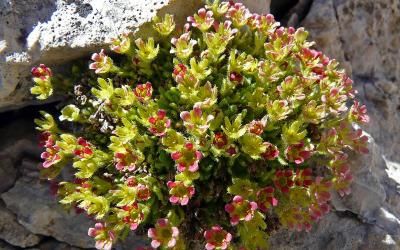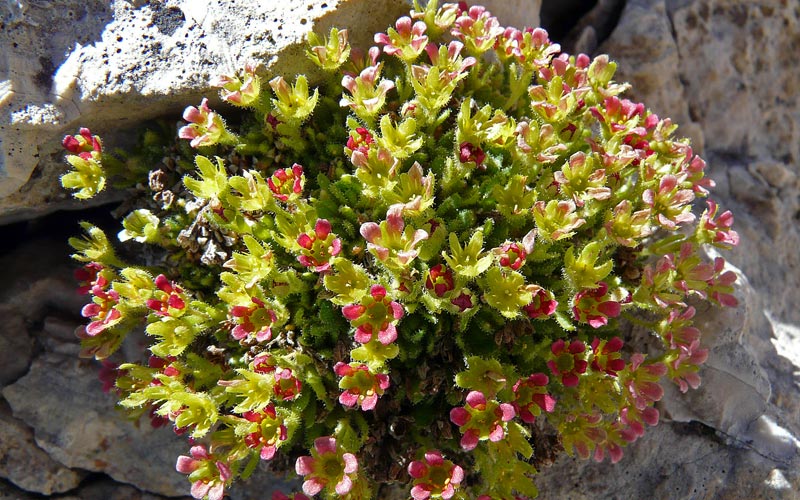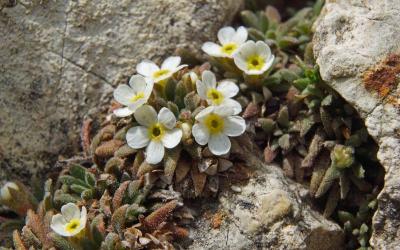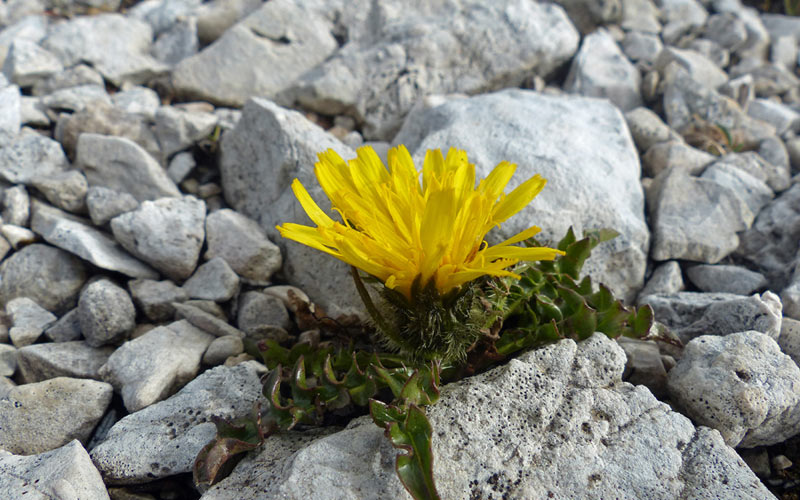Fanis and Lagazuoi
Flora and Vegetation

Saxifraga facchinii
Saxifraga facchinii

It is an endemic species whose range is limited to the highest elevations of the western Dolomites. In Cortina it grows only on some of the highest spurs of Tofana and Cime di Fanes, above 2,800 metres. It is one of the noblest and most characteristic elements of the high Dolomite flora. It is dedicated to doctor and botanist Francesco Facchini (1788-1852), from Fassa, who first studied the Dolomite flora.
×
Draba dolomitica
Draba dolomitica

Like Facchini's saxifrage, this is an endemic species whose habitat is limited to the highest summits of the western Dolomites. In Cortina it grows only on the top of Mt. Lagazuoi, Tofana Terza, and Croda del Valon Bianco, above 2,750 metres, and it is one of the noblest and most characteristic elements of the high altitude Dolomite flora.
×
Campanula morettiana
Campanula morettiana

Moretti's campanula is the endemic species par excellence; one of the most beautiful and symbolic flowers of the Dolomites, it grows on the south-facing overhanging cliffs, sheltered against heavy rainfalls, and forms spectacular purple flowering in August. It is present in the mid-southern Dolomites and its northern limit is on the southern slopes of Lagazuoi and Tofana.
×
Moehringia glaucovirens
Moehringia glaucovirens

This endemic species of the north-central Dolomites grows on rocky habitats, in niches of overhanging rocks, protected against direct rainfalls. It is not found at high altitudes and often shares its habitat with other endemic species, such as Campanula morettiana ; its Ampezzo habitat spreads from Cristallo to Nuvolau and Tofana.
×
Alpine Scurvy Grass
Alpine Scurvy Grass Rhizobotrya alpina

This endemic species is one of the rarest and most localized of the Dlomites. Its distribution is limited to the south-western Dolomites; in the Ampezzo Dolomites, it grows only in the stations of Lagazuoi Piccolo and Sas di Stria, where it finds its north-easternmost limit. The species is endangered through difficulty in germination due to climate change.
×
Androsace haussmanni
Androsace haussmanni

This tiny primrose grows on the rocky cracks of the highest Dolomite peaks, generally above 2,400 metres, where its stalkless flowers form compact rosette adherent to the rock. This endemic species is quite rare and its distribution is limited to the limestone areas of the Eastern Dolomites.
×
Triglav hawk's head
Triglav hawk's head (Crepis terglouensis)

This species can hardly be distinguished from the several other yellow Compositae and is an authentic rarity in the Dolomites. It only grows on the high altitude calcareous plateaux with clayey substratum. It is endemic species to the Karstic areas of the eastern Alps and in Ampezzo it is only found on the high cols of Col dei Bòs, Nuvolau and Lastoi de Formìn.
×